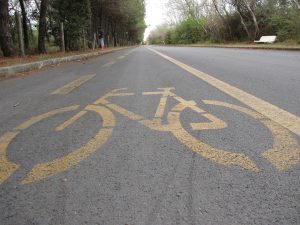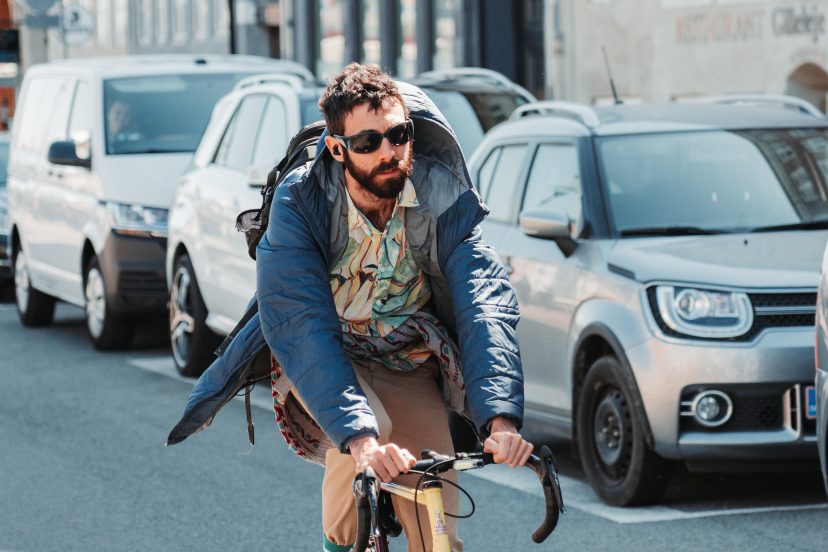Navigating Traffic and Road Safety: A Cyclist’s Guide
Introduction
As a passionate cyclist, I understand the importance of navigating traffic and prioritizing road safety. Whether you’re commuting or enjoying a leisurely ride, it’s crucial to adopt the right strategies to stay safe on the road. In this guide, I’ll provide helpful suggestions and reasons for practicing road safety while cycling, empowering you to confidently navigate traffic.
Understanding Traffic Rules
To ensure a safe and enjoyable cycling experience, it’s essential to understand and follow traffic rules.
Consider the following guidelines:
1. Obey Traffic Signals and Signs:
Adhere to traffic signals, including traffic lights, stop signs, and yield signs.
Use hand signals to indicate your intentions when turning or changing lanes.
Yield to pedestrians and respect their right of way.
2. Ride with the Flow of Traffic:
Always ride in the same direction as the traffic flow.
Stay on the right side of the road, but maintain a safe distance from parked cars to avoid collisions.
3. Be Predictable:
Maintain a consistent and predictable riding pattern.
Signal your turns and lane changes in advance to inform motorists of your intentions.
4. Stay Visible:
Wear brightly coloured clothing during the day and reflective gear at night.
Use front and rear lights to increase your visibility to motorists.
Sharing the Road with Motorists
Coexisting harmoniously with motorists is key to cycling safely. Follow these suggestions for a safer shared road experience:
1. Be Aware of Your Surroundings:
Continuously scan the road and anticipate potential hazards.
Check blind spots and be cautious of vehicles merging or turning.
2. Take the Lane When Necessary:
If the lane is too narrow to share with a vehicle, it’s acceptable to take the lane to ensure your safety.
Use hand signals to communicate with motorists and indicate when it’s safe for them to pass.
3. Maintain a Safe Distance:
Leave ample space between yourself and vehicles ahead.
Avoid tailgating or riding too close to parked cars to avoid potential door-opening accidents.
4. Be Cautious at Intersections:
Approach intersections with extra caution, even if you have the right of way.
Make eye contact with drivers to ensure they see you before proceeding.
Defensive Cycling Techniques
Practicing defensive cycling techniques can significantly enhance your safety on the road. Consider the following strategies:
1. Ride Predictably:
Maintain a straight line and avoid sudden swerving or unpredictable movements.
Signal your turns and lane changes well in advance.
2. Be Mindful of Road Conditions:
Watch out for potholes, debris, or uneven surfaces that can pose a risk to your safety.
Adjust your speed and position accordingly to navigate obstacles safely.
3. Stay Focused and Alert:
Avoid distractions such as using electronic devices while riding.
Stay attentive to your surroundings and anticipate the actions of motorists.
4. Enhance Your Visibility:
Wear reflective clothing and accessories, especially during low-light conditions.
Consider using additional visibility aids such as flags or reflective tape on your bicycle.
Roadside Preparedness and Maintenance
Being prepared and maintaining your bicycle can ensure a smoother and safer cycling experience. Follow these guidelines:
1. Perform Regular Bicycle Maintenance:
Check your brakes, tire pressure, and chain regularly.
Ensure that your bike is in good working condition before each ride.
2. Carry Essential Tools and Supplies:
Pack a basic repair kit including a spare tube, tire levers, and a multitool. Also make sure you carry identification in your pack as well just it case.
Consider carrying a pump, patch kit, and additional supplies based on your cycling needs.
3. Plan Your Routes:
Familiarize yourself with bike-friendly routes and roads with designated cycling lanes.
Use maps or navigation tools to find the safest and most convenient routes for your rides.
Always let someone either family or a friend know that you are out on your bicycle just in case anything happens while you are riding.
Conclusion
By following these suggestions and prioritizing road safety, you can confidently navigate traffic as a cyclist. Remember to be proactive, assertive, and always put safety first. By setting a positive example and practicing responsible cycling, we can create a safer environment for all road users.
FAQs
FAQ 1: Is it legal to ride a bicycle on the road?
Yes, in most jurisdictions, bicycles are considered vehicles and have the right to use the road. However, specific rules and regulations may vary, so it’s essential to familiarize yourself with local laws.
FAQ 2: How can I make myself more visible to motorists during nighttime rides?
To enhance visibility during nighttime rides, consider using front and rear lights, wearing reflective clothing, and adding reflective accessories to your bicycle.
FAQ 3: Should I wear a helmet while cycling?
Wearing a helmet is highly recommended for cyclists of all ages. A helmet can provide crucial head protection in the event of a fall or collision.
FAQ 4: How can I handle aggressive or impatient drivers?
If you encounter an aggressive or impatient driver, stay calm, avoid confrontation, and try to create distance between yourself and the vehicle. If necessary, find a safe location to stop and let the driver pass.
FAQ 5: Are there any specific rules for cycling in bike lanes?
When using bike lanes, follow the designated direction of travel, yield to pedestrians, and signal your intentions to other cyclists or motorists. Be mindful of parked cars and avoid riding too close to the curb.
Remember, safe cycling practices benefit everyone on the road. Enjoy your rides, stay vigilant, and prioritize the well-being of yourself and others.




